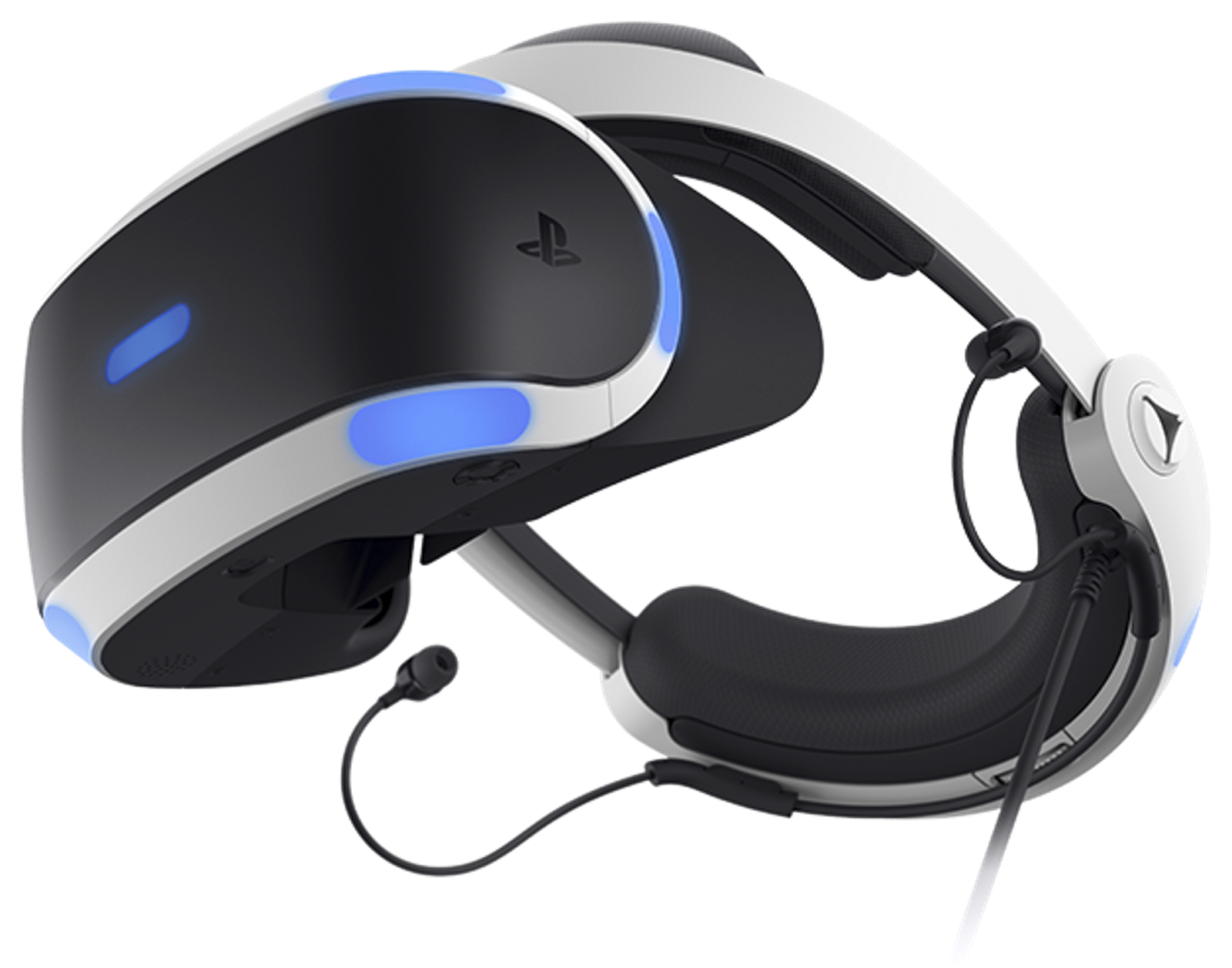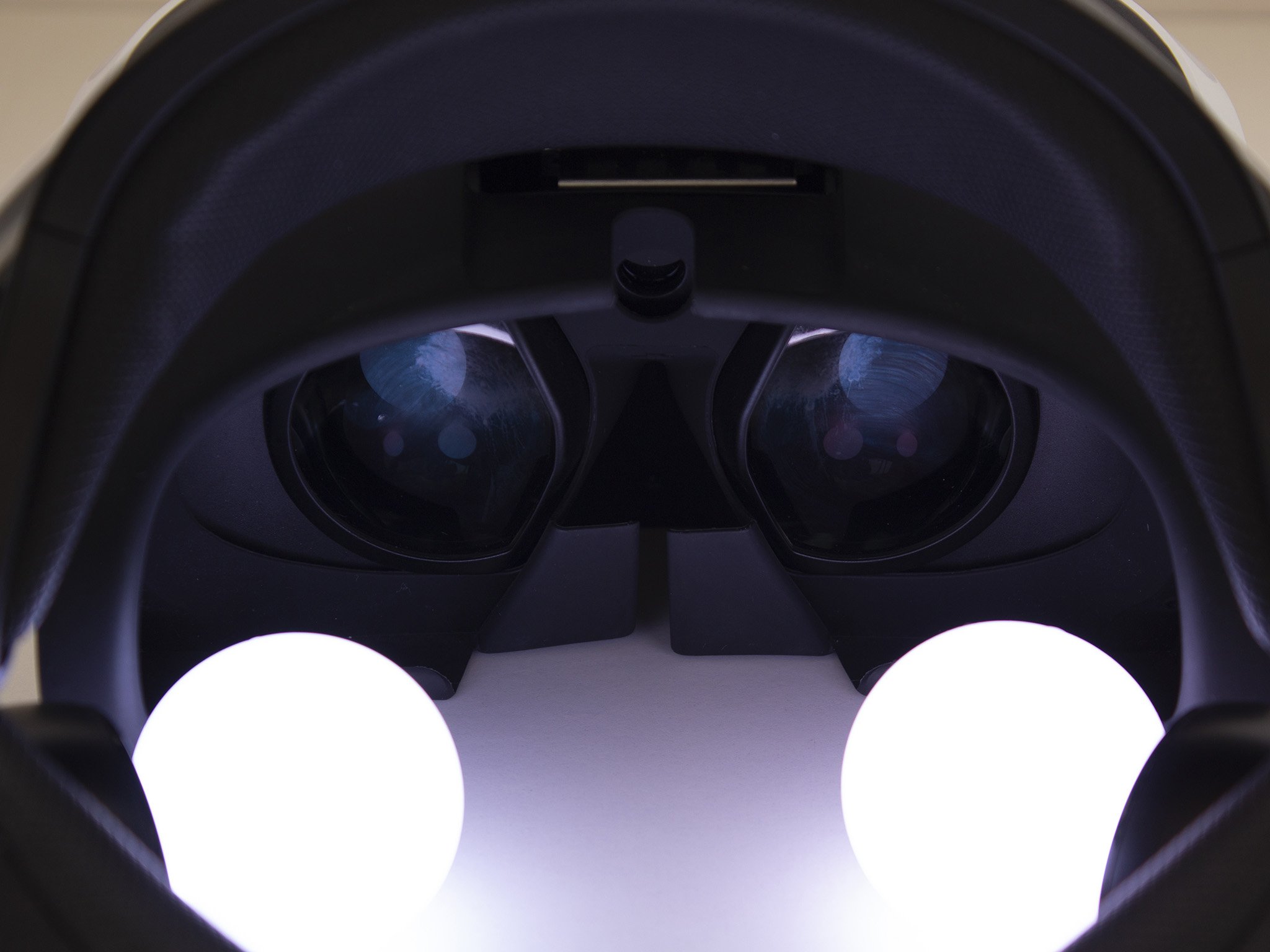Powerhouse
PlayStation VR2
Pros
- Higher resolution OLED display
- Eye tracking
- 110-degree Field of View
- Controllers based on DualSense tech
- USB-C compatible
- 120Hz refresh rate
Cons
- Unknown price
- Wired
- Requires a PS5
PlayStation VR2 is the next evolution of virtual reality for consoles. Taking advantage of the PS5's power, it should deliver performances that weren't possible on the original PSVR. With upgraded specs and a new set of Sense controllers, PS VR2 could be everything players have wanted. What remains to be seen is how expensive it will be and the types of games that come to it.
Old tech
PSVR
Pros
- OLED display
- Large game catalog
- Comfortable to wewar
Cons
- Outdated PlayStation Move controllers
- Inferior specs
- Multiple cables required
PSVR is a great option to enter the virtual reality space on PlayStation, but it's not for everyone. Several wires along with the PlayStation camera make it less than ideal, and its specs don't stand up to what other headsets like the Vive and Quest 2 offer. The PlayStation Move controllers are likewise subpar. What it has going for it is its affordability and a known and varied games catalog.
It should come as no surprise that Sony is upgrading just about everything to make PlayStation VR2 leaps and bounds better than its predecessor. That's not to say that PSVR doesn't have its place, but it's been several years since its initial release and it hasn't kept up as technology moved forward. PS5 VR (PS VR2) looks to take the console VR crown and wear it for quite a while.
PS VR2 vs. PSVR: What's the difference?
While PS VR2 is just the next iteration of PSVR for Sony, the company seems to have spared no expense im ensuring that it underwent serious revisions to make it the best possible product. We may not know what it looks like at the moment, but Sony has revealed some pretty impressive specs. Features like eye tracking have become a staple of good VR headsets, and it's something the original PSVR lacked. With the power of the PS5 behind it, PS VR2 could contend with some of the best VR headsets on PC.
| PS VR2 | PSVR | |
|---|---|---|
| Display | OLED | OLED |
| Display size | TBA | 5.7 inches |
| Resolution | 2000x2040 per eye | 960x1080 per eye |
| Refresh rate | 90–120 Hz | 90–120 Hz |
| Field of view | 110 degrees | 100 degrees |
| IPD adjustment | Manual | Digital through console |
| Sensors | Six-axis motion sensing system, IR Proximity sensor | Accelerometer, gyroscope |
| Cameras | Four cameras for headset tracking, two IR cameras for eye tracking (integrated) | PlayStation Camera (separate) |
| Audio | Integrated mic, headphone jack | Integrated mic, headphone jack |
| Connection | USB-C | USB, HDMI |
| Controllers | PS VR2 Sense controllers | PlayStation Move controllers |
| Weight | TBA | 600g |
| Compatibility | PS5 | PS4 (PS5 with adapter) |
| Price | TBA | MSRP $399 |
PS VR2 vs. PSVR: What these differences mean
Getting into VR without understanding the terminology can be daunting. We'll break down what these features mean to you and why you should care about the display's resolution or the fact that it now has inside-out tracking with several cameras.
Resolution, field of view, and refresh rate
PSVR was built with a single display screen, rendering images at a 1920x1080 resolution, or what's considered full high definition (Full HD). That resolution broke down to about 960x1080 per eye. PS VR2 will come packed with a display that offers 4K resolution, or 2000x2040 per eye. That's a drastic increase in the amount of pixels, making everything (potentially) much more detailed.
The field of view (FoV) is another important area to consider. This determines how much area you can perceive ahead of you while in VR. Humans have an approximate maximum horizontal field of view of 210 degrees. Video game FoVs vary, but they tend to range between 80-120 degrees, with the option for players to adjust it. PSVR supported an FoV of 100 degrees, but PS VR2 will be increasing that to 110 degrees. A wider FoV like this will allow players to view more of the environment at any given moment, and it should make it feel less claustrophobic.
The display itself on PS VR2 supports a refresh rate up to 120Hz, similar to what televisions can handle. Refresh rate is the amount of times an image appears on screen in one second. At 120Hz, the display is capable of showing 120 images in one second. The higher the refresh rate, the smoother the motion will appear.
IPD adjustment
If you're unfamiliar with virtual reality, you may not understand what IPD is or how it affects your experience. IPD stands for interpupillary distance, the distance between the center of a person's eyes. Being able to adjust the IPD measurement on a headset allows users to create a more optimal viewing experience, better reflecting the appropriate scale and 3D depth of the world in VR.
The original PSVR didn't have a physical dial that let users manually adjust the IPD. Instead, players would have to go through various settings on the PS4 to adjust it. This was less than ideal and created a headache with how overly complicated it was. PS VR2 is set to change that with the option to manually adjust the IPD through the headset itself.
Camera tracking and motion sensors
To determine where a person is looking or positioned, virtual reality headsets need to track their movement with cameras. This can be done through a variety of different methods, and Sony is making it so that PS VR2 is a big upgrade in that regard.
PSVR utilized outside-in tracking, meaning the tracking was done via a separate camera that was fixed to one position. Inside-out tracking, what PS VR2 will use, is a tracking method that features multiple cameras attached to the headset itself. As opposed to the stationary camera in outside-in tracking, inside-out tracking cameras are in motion. This typically makes for more accurate positional tracking, and is also generally less bulky.
PS VR2 is set to feature four cameras on the exterior for headset and controller tracking, along with two interior IR cameras to track eye movement (one for each eye). Eye tracking means that the system can detect the motion of your eyes, capturing enhanced input. Virtual reality, after all, typically takes place in a first-person point of view. Any additional motion tracking, including the subtlest of cues from your eyes, can make a huge difference in how you interact with the environment. Not only that, but it heightens the level of realism possible.
Its six-axis motion sensing system (three-axis gyroscope, three-axis accelerometer) is expected to be much more accurate that the gyroscope and accelerometer used in the original PSVR. In addition, the PS VR2 headset has a built-in motor to provide sensory feedback through vibrations.
PS VR2 Sense controllers
PlayStation Move controllers for the PSVR resembled wands, limiting their performance and function compared to modern VR controllers (remember, the PlayStation Move controller was designed for the PS3 and first released in 2010, well before Sony expanded its compatibility to VR). PS VR2 will utilize PS VR2 Sense controllers that resemble the Oculus Touch controllers. This design sports an orb shape, wrapping around the controller for better ergonomics. The original PSVR had the PlayStation Aim controller, too, which vaguely resembled a gun and was meant for shooters.
Not only do PS VR2 Sense controllers support adaptive triggers and haptic feedback like the PS5 DualSense controller, they also feature finger touch detection, allowing the hardware to detect where your fingers are in order to correctly replicate movement and gestures. The tracking ring is how the headset itself will more accurately track the Sense controllers.
Sony is also changing up the way the buttons are distributed. Each PlayStation Move controller had all four face buttons crammed onto the front, making them incredibly tiny and awkward to use. Sense controllers take a more modest approach, sporting the triangle and square buttons on the left controller and the cross and circle buttons on the right. Both the left and right Sense controllers have trigger and grip buttons, as well. And in place of the dedicated Move button, the Sense controllers will have analog sticks.
PS VR2 vs. PSVR: Bottom line
The final design of PS VR2 remains a mystery, but its specs paint a bright picture. There's no doubt that it will be superior to the PSVR, and if you want to get into VR on consoles, PS VR2 will be your best option. By today's standards the tech built into PSVR is simply archaic. While it has some decent games and is fairly accessible, it's becoming more outdated each passing day.
Upgrade
PlayStation VR2
Virtual reality on consoles is about to get a whole lot better
Powered by the PS5, PS VR2 is the next big leap for virtual reality on consoles. Some impressive specs and an equally impressive pair of controllers make it seem like this could be a real winner for Sony.
Outdated
PSVR
PSVR has overstayed its welcome
PSVR never had the power to take off like it should have, and some odd decisions by Sony made it unable to keep up with the competition. As accessible as it was, and still is, for many people, it leaves a lot to be desired.






Tidak ada komentar:
Posting Komentar